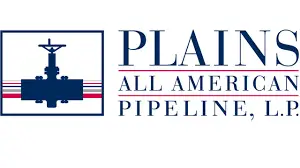If you’re looking for a balanced investment approach that uses facets of value investing and growth investing, the GARP investing style is a great option to consider. In this post we will take a look into the GARP investment style and see why its so popular amongst value and growth investors.
Summary
- Growth at a reasonable price combines disciplines of both value investing and growth investing
- The GARP investment style avoids companies with extremes in value and growth
- GARP uses the price/earnings growth (PEG) ratio to find stocks, with an ideal PEG ratio being less than 1
- Can help investors avoid common pitfalls associated with growth stocks and value stocks
What is Growth at a Reasonable Price (GARP)?
Growth at a reasonable price or commonly referred to as “GARP”, is an investment style that combines disciplines of both value investing alongside growth investing to find individual equities to invest in. The GARP investment style focuses on finding companies with earnings growth above the regular market and removing companies that have extremely high valuations.
Recommended Reading: Warren Buffett’s Investing Style
The main goal of the GARP investment style is to avoid investing in companies that have extremes in both value and growth. With this investment style, investors can focus on finding stocks that are undervalued and have a higher potential for growth while avoiding the extremes.
How is GARP Calculated?
The formula for finding GARP is the price/earnings growth ratio (PEG).
PEG RATIO = (Price/EPS ) / EPS Growth
The ratio divides a company’s current P/E ratio by the earnings growth rate and is used to measure the balance between growth and valuation of a company.
An ideal PEG ratio is less than 1.
Company XYZ
- Price Per Share – $50
- EPS this year – $2.35
- EPS previous year – $1.95
Knowing this information, the following can be calculated.
P/E ratio = $50/ $2.35 = 21.27
Earnings Growth Rate = ($2.35/$1.95) -1 = 21.51%
PEG ratio = 21.27/21.51 = .988
In this instance, the PEG ratio is less than 1, so company XYZ would qualify as a solid investment for the GARP investment style.
Company ABC
- Price Per Share – $65
- EPS this year – $3.90
- EPS previous year – $3.75
Knowing this information, the following can be calculated.
P/E ratio = $65/ $3.90 = 16.67
Earnings Growth Rate = ($3.90/3.75) -1 = 4%
PEG ratio = 16.67/4 = 4.16
In this instance, the PEG ratio is much higher than 1, so company ABC wouldn’t qualify as a solid investment for the GARP investment style.
GARP Stocks
Now that you’re familiar with the GARP strategy and how to calculate it let’s take a look at some “GARP stocks” to add to your portfolio.
Molson Coors

- Current P/E vs. 10-year average: 15.7 and 24.5
- Market Value: $11.7 billion
- Earnings Growth Rate = 16%
- PEG Ratio = 15.7/16 = .98
Knowing these facts, we can that Molson Coors has PEG ratio of .98 which makes it a solid investment under the GARP investing formula.
Plains All American Pipeline

- Current P/E vs. 10-year average: 9.7 and 22.0
- Market Value: $8.3 billion
- Earnings Growth Rate = 13%
- PEG Ratio = 9.7/13 = .74
Plains All American has a PEG Ratio of .74 which makes it very undervalued according to our formula and is positioned greatly for as a value play.
Rent-A-Car

- Current P/E vs. 10-year average: 9.8 and 13.0
- Market Value: $3.5 billion
- Earnings Growth Rate = 12%
- PEG Ratio = 9.8/12 = .81
The pandemic has not been friendly for rental car companies. However, with COVID restrictions getting lifted, this opens up opportunity for the car rental market to get back to normal. With a PEG Ratio of .81 Rent-a-Car is in a great position to perform well for value and growth investors.
Who Invented GARP Investing?
The GARP investment style was made popular by Peter Lynch, an American investor, mutual fund manager and philanthropist. Peter Lynch served as the portfolio manager of the Magellan Fund at Fidelity Investments from 1977 and 1990.
During his tenure at Fidelity Investments, Lynch averaged a 29.2% annual return for the Magellan Fund making it the best-performing mutual fund in the world at the time.
Why is GARP Important?
Measuring GARP can be important because it can help investors to avoid common pitfalls with pure growth stocks and pure value stocks. Growth stocks can have a rapid rise in price and come crashing down just as fast, while value stocks can stay stagnant and have no price appreciation for a long period of time.
By using the GARP ratio, investors can find stocks that have stable appreciation in price without too much downside risk.
Disadvantages of Using the GARP Investment Style
Although the GARP can be a great way to find undervalued stocks, it comes with some disadvantages. In a growth market, GARP stocks can underperform growth stocks and underperform value stocks in a value market.
As such, it’s imperative that you are aware of the current market conditions before you decide to use the GARP investment style.